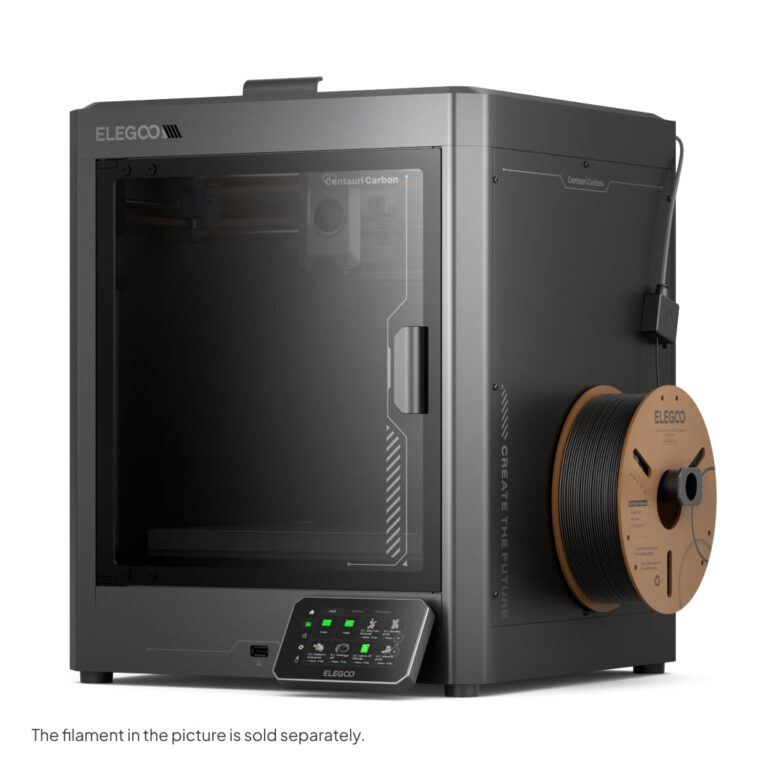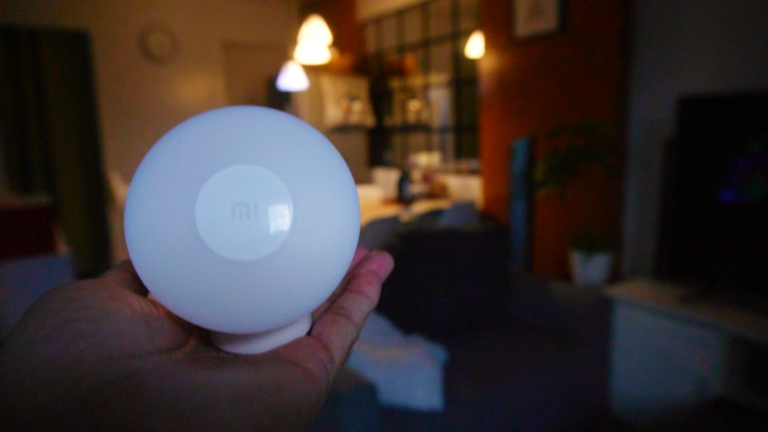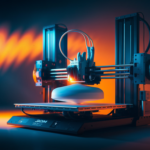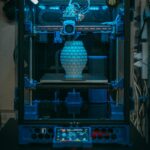Introduction to the Bambu Lab A1 3D Printer
The Bambu Lab A1 3D Printer stands out as a versatile and efficient device in the rapidly expanding 3D printing market. Targeted towards both hobbyists and professional users, this 3D printer bridges the gap between consumer-grade and industrial-level performance. The main audience includes individuals seeking a reliable, user-friendly machine that delivers high-quality prints without excessive operational complexity.
One of the key specifications of the Bambu Lab A1 involves its impressive build volume, which stands at 220 x 220 x 250 mm. This generous space allows users to create larger models or batch produce smaller items with ease. Designed with precision and durability in mind, the printer features a robust metal frame and high-quality components, ensuring consistent performance even with prolonged use.

The technology driving the Bambu Lab A1 is also notable. It employs Fused Deposition Modeling (FDM), a popular and effective method of 3D printing that uses thermoplastic filament. This model is compatible with a wide range of filament types, including PLA, ABS, and PETG, providing flexibility for various applications. Additionally, the printer boasts a direct drive extruder, enhancing its ability to print more complex materials such as TPU and Nylon, making it a versatile addition to any creator’s toolkit.

Creality K1C 3D Printer, 2024 New Version 600mm/s High-Speed Auto Leveling Clog-Free Robust Direct Extruder K1 Upgrade 3D Printer with AI Camera 300°C Printing Support Carbon Fiber Filaments

A standout feature of the Bambu Lab A1 is its user-friendly interface. The touch-screen control panel offers intuitive navigation and a seamless setup process, even for those new to 3D printing. Another innovative aspect is its automatic bed leveling system, which significantly reduces the time and effort required to begin printing, ensuring the first layer adheres correctly every time.
Unique selling points of the Bambu Lab A1 include its built-in Wi-Fi connectivity, enabling remote monitoring and control via a dedicated mobile application. This feature is particularly appealing to users who wish to manage their prints on the go. Additionally, the printer’s ability to recover from power outages and resume printing from where it left off minimizes wasted material and time, setting it apart from many competitors in the market.
Performance and Print Quality
The Bambu Lab A1 3D printer is engineered to deliver exemplary performance and print quality, making it a notable contender in the 3D printing industry. Upon extensive testing, the printer has proven to consistently produce highly detailed and precise prints. With a maximum layer resolution of 50 microns, the Bambu Lab A1 ensures that even the most intricate designs are rendered flawlessly. This level of detail is especially beneficial for producing complex geometries and fine textures.
Speed is another critical aspect where the Bambu Lab A1 stands out. The printer boasts a build speed of up to 150 millimeters per second without compromising on accuracy. This efficiency is advantageous for both hobbyists and professionals who require quick turnaround times for their projects. When compared to industry benchmarks, such as the Prusa i3 MK3 or the Creality Ender 3, the Bambu Lab A1 competes robustly, offering comparable, if not superior, printing speeds.

One of the strengths of the Bambu Lab A1 is its versatility in handling various materials. It is compatible with PLA, ABS, PETG, TPU, and even more challenging filaments like nylon and carbon fiber-infused materials. This flexibility makes it an excellent choice for users who need to print with different materials for varying applications. During testing, the machine exhibited reliable extrusion and consistent layer adhesion, ensuring durable final products irrespective of the material used.

SUNLU PLA Filament 1.75mm Black 1KG, Neatly Wound PLA Meta 3D Printing Filament, Tougher and Fast Printing, Dimensional Accuracy +/- 0.02 mm, 1KG Spool(2.2lbs), Fits for Most FDM 3D Printers


Creality 2kg Black & White PLA 1.75mm Filament Bundle for 3D Printing with No-Tangling Strong Bonding and Overhang Performance, Accuracy +/- 0.02mm

However, a few weaknesses were identified during testing. The printer occasionally struggles with maintaining temperature stability in prolonged prints, which could affect the quality of larger models. Additionally, the noise level during operation is slightly higher compared to some of its competitors, which might be a concern in quieter workspaces.
In summary, the Bambu Lab A1 excels in print quality, speed, and material versatility. While it has a few minor drawbacks, its performance positions it well against other printers in its category, offering robust and reliable 3D printing solutions.
Ease of Use and Setup
The Bambu Lab A1 3D Printer distinguishes itself with user-friendliness as one of its primary strengths, making it an appealing option for both novices and experienced users alike. Setting up this 3D printer is remarkably straightforward, largely due to its semi-assembled design. Upon unboxing, users will find that the printer requires minimal assembly, with the most intricate parts already put together, significantly reducing the initial setup time. This feature alone makes the Bambu Lab A1 one of the more accessible models on the market.
The calibration process is another area where the Bambu Lab A1 shines. It features an intuitive calibration system that includes an auto-leveling bed and a straightforward nozzle alignment procedure. This functionality minimizes the risks of user error and ensures a higher success rate for print jobs right out of the box. Additionally, the user interface is highly intuitive, featuring a touch-screen display that simplifies navigation through various settings and options. The touchscreen interface is responsive and designed with a clear layout that helps in setting up print jobs quickly and efficiently.

Software compatibility is another notable facet of the Bambu Lab A1 3D Printer, as it supports a wide range of slicing software. The compatibility with popular software such as Cura and PrusaSlicer ensures that users have the flexibility to select a tool that best suits their preferences and needs. Furthermore, the manufacturer provides proprietary software that is tailored specifically for the Bambu Lab A1, offering more optimized settings and pre-configured profiles to significantly ease the workflow.

Anycubic Kobra 2 Neo 3D Printer, Upgraded 250mm/s Faster Printing Speed with New Integrated Extruder Details Even Better, LeviQ 2.0 Auto-Leveling Smart Z-Offset Ideal for Beginners 8.7″x8.7″x9.84″

One of the standout features in terms of ease of use is the filament detection and runout sensor. This system alerts the user when the filament is running low or has run out, thereby minimizing failed prints and wasted material. However, despite its many strengths, there are some minor challenges. For instance, the process of updating firmware can sometimes be less than intuitive, requiring users to navigate through multiple settings. In addition, while the printer’s manual is comprehensive, beginners might find the sheer amount of information overwhelming at first.
Overall, the Bambu Lab A1 3D Printer offers a commendably user-friendly experience. Its straightforward setup, intuitive interface, and extensive software compatibility make it a versatile choice suitable for both beginners and seasoned 3D printing enthusiasts.
Pros and Cons of the Bambu Lab A1
The Bambu Lab A1 3D printer has garnered significant attention for its combination of advanced features and affordability. Among its many advantages, the A1 stands out for its exceptional build quality and cost-efficiency. The printer is designed with sturdy materials, ensuring durability and long-term use. Additionally, the pricing is attractive, making it an economical choice for both hobbyists and professionals.
Another notable strength is its innovative features. The Bambu Lab A1 includes a state-of-the-art auto-leveling system, which simplifies the setup process and enhances print accuracy. It also boasts a high-resolution printing capability, allowing for intricate and detailed creations. The ease of use is further enhanced by its user-friendly interface and comprehensive support materials, which help users quickly become proficient with the device.
However, the Bambu Lab A1 is not without its drawbacks. One of the primary concerns is the learning curve associated with its advanced functionalities. While the printer is designed to be accessible, beginners might still find it overwhelming to master all the features. Additionally, some users have reported occasional technical issues, such as software glitches or hardware malfunctions, which can disrupt the printing process.
Material compatibility is another area where the Bambu Lab A1 could improve. While it supports a variety of common 3D printing materials, it may not perform optimally with some of the more specialized or experimental filaments. This limitation could be a potential hindrance for users aiming to explore a wide range of materials in their projects.
In conclusion, the Bambu Lab A1 3D printer offers a strong value proposition with its blend of quality, affordability, and innovative features. It is particularly well-suited for users who prioritize print quality and cost-efficiency, including hobbyists, educators, and professionals in need of a reliable and versatile 3D printing solution. While it does have some limitations, the overall performance and features make it a compelling choice in the 3D printing market.








